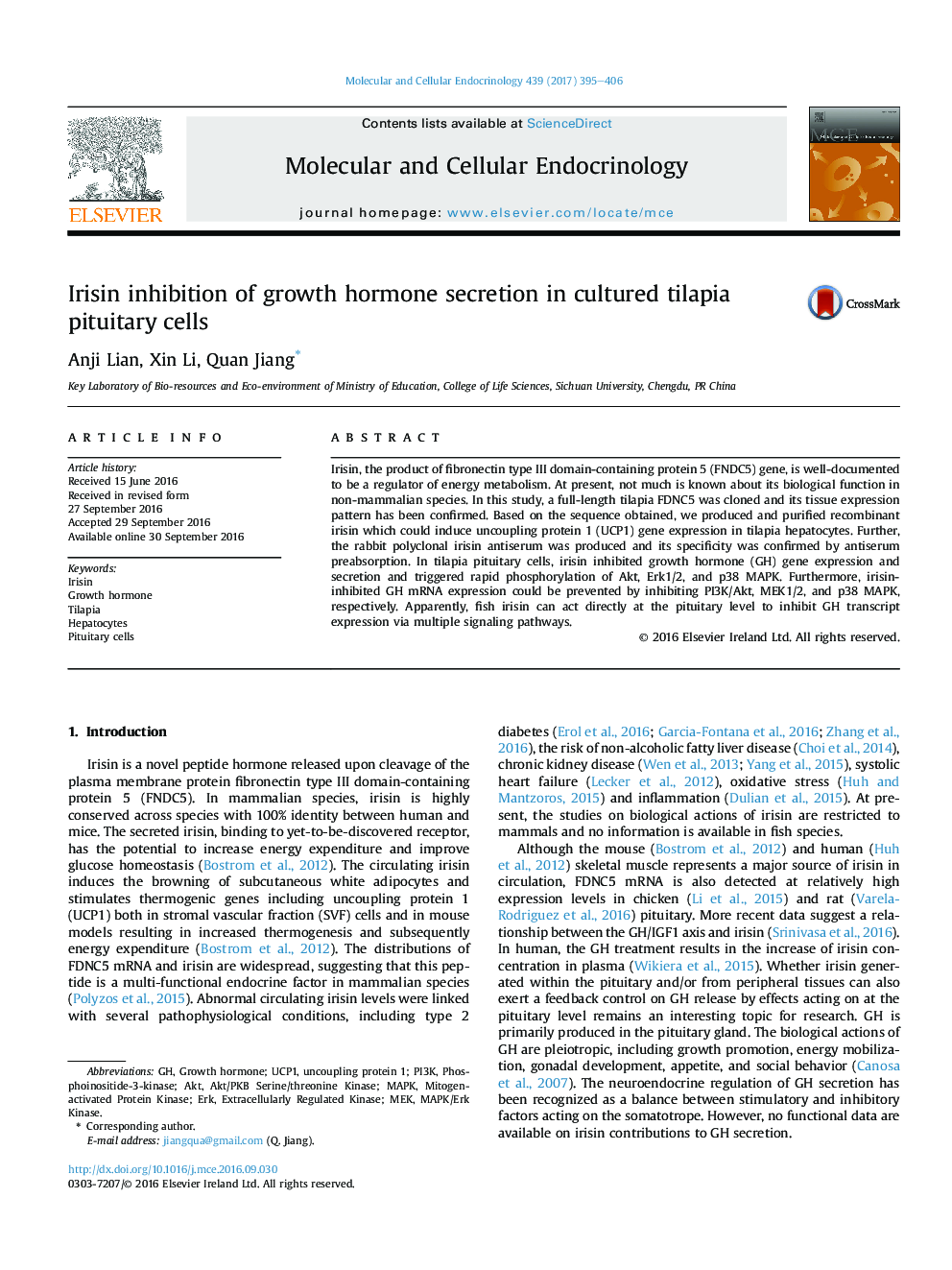| Article ID | Journal | Published Year | Pages | File Type |
|---|---|---|---|---|
| 5534331 | Molecular and Cellular Endocrinology | 2017 | 12 Pages |
â¢Cloning of tilapia FNDC5 and examination of its tissue expression pattern.â¢Production of recombinant irisin and confirmation of its biological activity.â¢The antiserum produced was highly specific for tilapia irisin.â¢Irisin inhibited GH gene expression and secretion in tilapia pituitary cells.â¢Irisin reduced GH transcript expression via multiple signaling pathways.
Irisin, the product of fibronectin type III domain-containing protein 5 (FNDC5) gene, is well-documented to be a regulator of energy metabolism. At present, not much is known about its biological function in non-mammalian species. In this study, a full-length tilapia FDNC5 was cloned and its tissue expression pattern has been confirmed. Based on the sequence obtained, we produced and purified recombinant irisin which could induce uncoupling protein 1 (UCP1) gene expression in tilapia hepatocytes. Further, the rabbit polyclonal irisin antiserum was produced and its specificity was confirmed by antiserum preabsorption. In tilapia pituitary cells, irisin inhibited growth hormone (GH) gene expression and secretion and triggered rapid phosphorylation of Akt, Erk1/2, and p38 MAPK. Furthermore, irisin-inhibited GH mRNA expression could be prevented by inhibiting PI3K/Akt, MEK1/2, and p38 MAPK, respectively. Apparently, fish irisin can act directly at the pituitary level to inhibit GH transcript expression via multiple signaling pathways.
